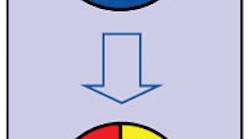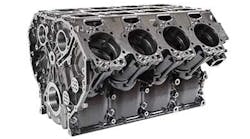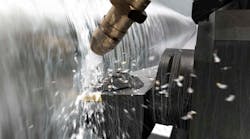“Tooling specialization in the highly competitive machining marketplace is a basic requirement for success,” said Gary Lake, President of CemeCon Inc. — a company that specializes in the coating of cutting tools.
“Particularly in this current tough economic environment, tooling manufacturers that supply standard catalog-type tooling seem to be hardest hit. On the other hand, manufacturers that seem to be doing well are those that have developed specialized tooling designed for specific applications or machining operations and are serving growth markets such as the aerospace, power generation or medical industries.
“A successful tool is usually one that has a substrate, geometry and coating package that is optimized for an application. A standardized tool with a coating applied to it without thought of customizing it for an application probably will not perform as well.
“Most successful tooling manufacturers agree that it is very difficult to have a sustainable business without product differentiation. Developing that differentiation depends on understanding how the tool is to be used and understanding the complete interaction of the substrate, geometry, and coating. A successful tool must have a good substrate, a unique or applied geometry and the right coating relative to the material to be cut. Also important is preparation of the tool to receive the coating, correct edge prep to enhance the cutting process and support the coating, and the right finish on the coating after it is applied,” Lake said.
“There are two approaches to justifying an investment in coating technology. Tooling manufacturers or shops looking at doing their own coating can look at justifying in-house coating by buying the coating equipment and doing it less expensively in-house. However, if in-house coating were only an economic consideration, only large companies with the required volume to get a satisfactory return could afford the investment.”
Lake recommended a more forward-looking approach. “This is to view in-house coating as a way to customize and differentiate a product to enhance growth in specific markets and applications.
“For example, at CemeCon we typically are talking with companies that are considering an investment in an in-house coating capability that may be 20 percent to 25 percent of annual sales. They justify this because they see how in-house coating will help them differentiate their products and lead to greater long term growth.
“We provide coating services based on customer specification, we do not have a generic process. For example, a manufacturer may come to us with an insert with a specific geometry that is targeted to cut materials with a hardness of Rc 57 to Rc 62 in the mold and die industry and must achieve a specific surface finish. We will then tailor a coating with a particular chemistry, thickness and finishing process. On subsequent orders, we enter that particular part number to generate a complete customized specification.
“We don’t apply a coating to a generic product because that may not meet the functional requirements of the user. We look at a tool as a combination of substrate, geometry and coating and not as a substrate and geometry to which we add a general-purpose coating,” he said.






